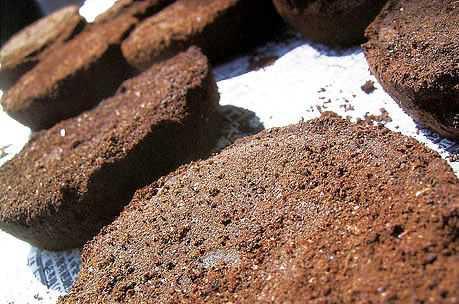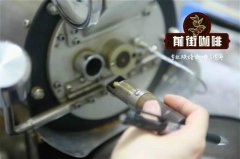How to grade the coffee beans?

Grade of coffee taste
There are four main levels of coffee taste:
1. Gan: sweet taste is when roasting coffee beans with sugar, caramel ingredients make the brewed coffee have licorice flavor.
two。 Acid: acid is a compound in beans that is commonly mistakenly called "coffee tannic acid". Some beans will taste less sour after aging and eventually disappear completely.
3. Bitterness: bitterness is the product of decomposition when baking beans. When brewing coffee, the soluble minerals in coffee beans decompose too much, it will have a bitter taste.
4. Neutral: neutral beans are widely used in daily life, especially in synthetic beans.
Classification according to the altitude of coffee producing area
This classification standard is mainly because the quality of coffee produced at high altitude is generally higher than that at low altitude, because high altitude and low temperature, slow coffee production is conducive to the accumulation of good substances. And the raw beans with high maturity have good expansibility when baking, which is beneficial to baking, and the quality is more stable.
At present, the coffee producers using this classification standard are Central and South American countries such as Guatemala, Mexico, Honduras, El Salvador and so on. Take Guatemala as an example, the most advanced coffee is called SHB (short for Strictly HardBean) very hard beans, which is grown at an altitude above 1350m, followed by HB (HardBean) hard beans, planted at 1200m--1400m above sea level, SH (Semi HardBean) slightly hard beans, EPW (Extra Prime Washed) super quality water washed beans, PW (Prime Washed) high quality water washed beans, EGW (Extra Good Washed) special quality water washed beans, GW (Good Washed) good quality water washed beans, respectively, at an altitude of 1200m. About 1000m, 800m, 600m, 800m, 800m, 600m, 600m, 800m, 800m, 600m, 800m, 800m, 800m, 800m, 800m, 800m, 800m, 800m, 800m, 800m, 800m, 800m, 800m, 600m, 800m, 800m, 600m, 800m, 600m, 800m, 600m, 800m, 600m, 800m, 600m, 800m, 600m, 800m, 600m, 800m, 600m, 800m, 600m, 800m, 600m, 800m, 600m, 800m, 800m, 600m, 800m, 800m, 600m, 800m, 800m, 600m, 800m, 800m, 600m, 800m, 800m, 600m, 800m, 800m, 800m, 800m, 800
Classification and classification of coffee
In order to distinguish between good quality coffee beans and poor quality coffee beans, we have to grade the coffee. Coffee grading is usually based on defect rate, bean size, altitude, raw bean density, treatment standards and so on, so it is more often described by a variety of standards.
There are two ways to classify raw coffee beans, one is the filter number, and the other is the elevation.
It is divided by the number of the filter screen, and the size is in the unit of the screen (size).
Round beans are generally smaller than flat beans, between 8-13 and 12-29.
8, 9, 10. 12, 13. 18. 29 = > small, medium, ordinary. Quasi-big. Big, extra large. The bigger the size, the bigger the beans. SC-19, for example, is the No. 19 bean.
Grade by level:
According to the elevation of the cultivated land, it can be divided into seven grades. Generally speaking, the quality of highland beans is better than that of lowland beans, and the price is higher because of the increase in freight.
Sequence number equal order abbreviated elevation
1 selected quality beans S.H.B 4500 ~
2 good coffee beans H.B 4000mm 4500
3 medium coffee beans S.H 3500 million 4000
4 super high-grade washed coffee beans E.P.W 30003500
5 first-class washed coffee beans P.W 250000 3000
6 special water washed coffee beans E.G.W 2000 2500
7 High quality washed coffee beans G.W ~ 2000
-grading according to defect rate
American standard USP
US preparation
European standard EP
Euro preparation
The best standard GP
Gourmet preparation
Many countries have USP, EP and GP standards, and USPEP is relatively more common. European and American standards are based on the specific requirements for the defects or items of raw beans, and sometimes there are other standards among them, which are not detailed because different national standards are different. Generally speaking, the EP standard is higher than the USP standard.
Important Notice :
前街咖啡 FrontStreet Coffee has moved to new addredd:
FrontStreet Coffee Address: 315,Donghua East Road,GuangZhou
Tel:020 38364473
- Prev

Consume 2 billion cups of coffee a day and use the rest of the coffee residue for these purposes.
Professional coffee knowledge exchange more coffee bean information please follow the coffee workshop (Wechat official account cafe_style) recently, IEA announced the 2018 photovoltaic installation situation, the top 10 are: China, India, the United States, Japan, Australia, Germany, Mexico, South Korea, Turkey, New Zealand. More than 2 billion cups of coffee are consumed globally, and most of the coffee grounds
- Next

What is hand-fried coffee? How to bake coffee beans at home? The method of roasting coffee beans
Professional coffee knowledge exchange more coffee bean information please follow the coffee workshop (Wechat official account cafe_style) the first step: after peeling and shelling the original fruit of the coffee beans, there will still be a little dry and thin skin on the surface of the green kernel after the sun, but this does not affect the fried beans step 2: first fire to the medium heat and then the pot is 5 to 10 centimeters away from the fire source, and then it is about constantly.
Related
- Beginners will see the "Coffee pull flower" guide!
- What is the difference between ice blog purified milk and ordinary milk coffee?
- Why is the Philippines the largest producer of crops in Liberia?
- For coffee extraction, should the fine powder be retained?
- How does extracted espresso fill pressed powder? How much strength does it take to press the powder?
- How to make jasmine cold extract coffee? Is the jasmine + latte good?
- Will this little toy really make the coffee taste better? How does Lily Drip affect coffee extraction?
- Will the action of slapping the filter cup also affect coffee extraction?
- What's the difference between powder-to-water ratio and powder-to-liquid ratio?
- What is the Ethiopian local species? What does it have to do with Heirloom native species?

